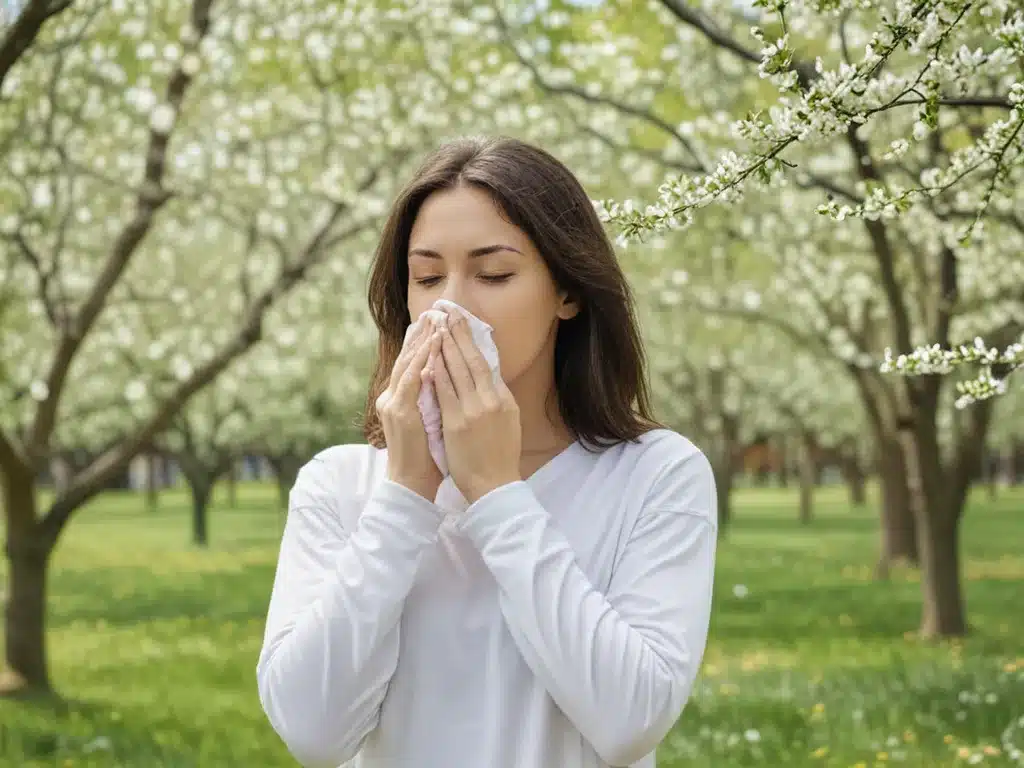Springtime brings blooming flowers, warmer weather, and unfortunately, seasonal allergies for many people. As trees and plants release pollen into the air, allergy sufferers experience symptoms like sneezing, coughing, itchy eyes, and sinus congestion. However, with some diligent spring cleaning and other preventive measures, you can help reduce allergy flare-ups this season.
How Spring Cleaning Helps Allergies
Spring cleaning goes beyond general tidying – it’s a deep clean to remove allergens that have built up over the winter. Here’s how a thorough spring clean can make a difference for allergies:
Remove Dust and Pet Dander
- Dust contains microscopic particles and fibers that aggravate allergies. It also harbors pet dander, which can trigger symptoms even if you don’t have pets.
- Vacuum and dust furniture, carpets, drapes, ceiling fans, and other surfaces where dust collects. Use a vacuum with a HEPA filter to capture allergens.
- Wash bedding, pillow and mattress covers, curtains, and other fabrics. Use hot water to kill dust mites.
Clear Out Clutter and Clean Floors
- Clutter provides places for dust and allergens to accumulate. Get rid of clutter and organize closets, bookshelves, and other problem areas.
- Mop hard floors and vacuum and shampoo carpets. This picks up dust and dirt that lead to allergy issues.
Disinfect Surfaces in the Kitchen and Bathroom
- Clean countertops, sinks, showers, and toilets with a disinfectant cleaner. Bacteria and mold can thrive in kitchens and bathrooms, exacerbating allergy symptoms.
Improve Air Circulation and Quality
- Open windows regularly to circulate fresh air. This helps reduce dust, pet dander, and other allergens in the air.
- Change HVAC air filters to trap allergens. Consider installing a HEPA air purifier as well.
- Inspect for and seal any leaks or cracks that could allow allergens in. Pay attention around windows and door frames.
Other Steps to Reduce Allergy Symptoms
In addition to spring cleaning, making a few lifestyle changes can help minimize allergy flare-ups:
Shower at Night to Remove Pollen
- Pollen clings to your hair and skin after being outside. Showering before bed removes pollen so you don’t bring it into your bedding.
- Use fragrance-free hair and skin products to avoid irritating skin.
Limit Time Outdoors Mid-day
- Pollen counts peak during mid-day hours. Avoid extended time outdoors between 10am-3pm if possible.
- Check daily pollen counts and limit outdoor exposure on high pollen days.
- After being outside, change and wash clothing to prevent pollen buildup indoors.
Use Air Conditioning and Dehumidifiers
- Running AC and lowering humidity helps filter pollen from the air. This is especially key during peak pollen seasons.
- Close windows and rely on AC instead of natural ventilation on high pollen days.
- Use dehumidifiers and empty them often to control humidity under 50%.
Take Off Shoes at the Door
- Pollen clings to shoes when you come inside. Develop a no-shoe policy indoors to prevent tracked-in pollen.
- Provide shoe storage near the entryway, like a shoe rack or cubbies.
Consider OTC and Prescription Allergy Medication
- Oral antihistamines like Zyrtec, Allegra, and Claritin help block histamine and reduce symptoms.
- Nasal sprays like Flonase and Nasacort decrease inflammation. Use daily for best results.
- Talk to your doctor about prescription medications if OTC drugs aren’t sufficient.
Develop an Allergy Action Plan
Managing seasonal allergies takes diligence, but a strategic cleaning and prevention plan can make a significant difference. Be proactive by doing a deep clean before allergy season ramps up. Then stick to daily habits like showering before bed, closing windows mid-day, and using allergy meds as needed. With the right preparation and vigilance, you can tackle allergies head-on this spring.







